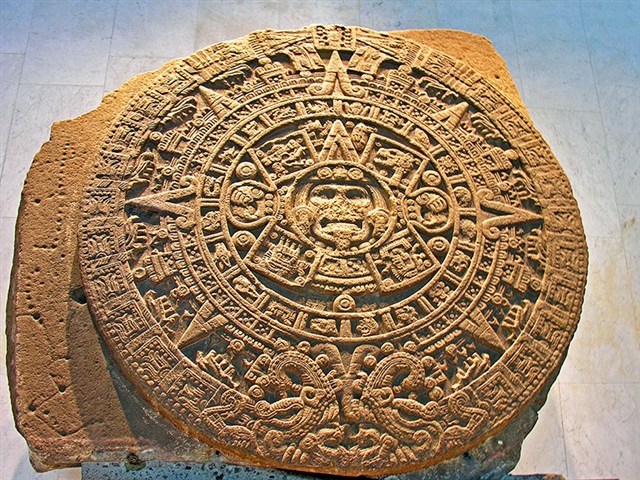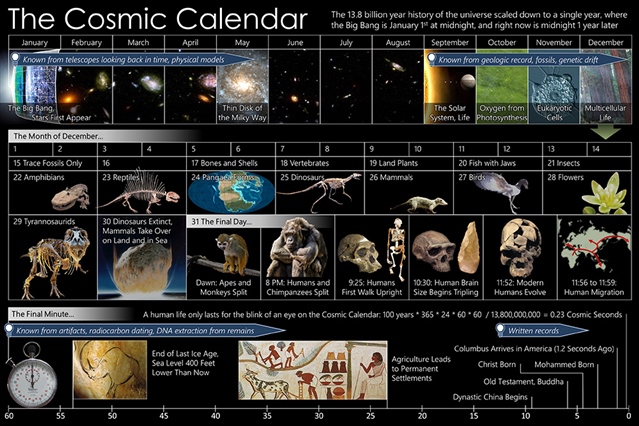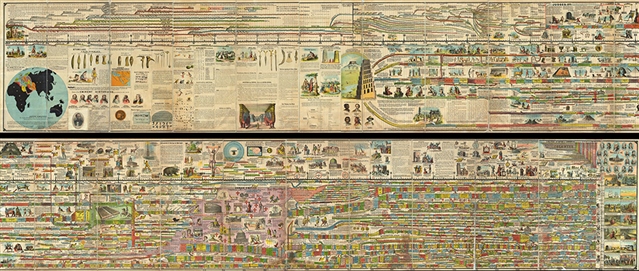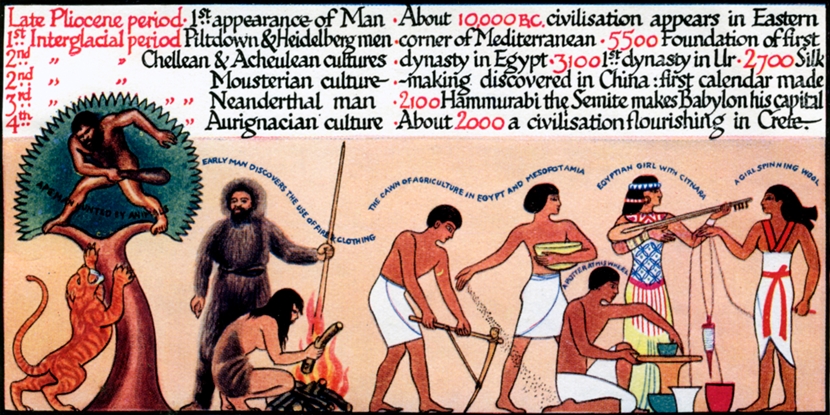By Bennett Sherry, OER Project Team
Maine, USA
What. A. Year. If you’re like me, time has felt weird in 2020. It’s flown by and yet slowed to a crawl. The drudgery of quarantine day-to-day is punctuated by the sudden, all-encompassing horror that—holy...! Summer’s over? How?!
Can you do me a favor? (You’re not busy this time of year, are you?) If you assigned the History of Me or the Draw Your History activities, would you include an addendum this year? Ask your students to periodize 2020. Have them divide the year into the nine units they’d cover in a history class about the year 2020. Where do they start? January 1? Early March? Are there any units on murder hornets? Do any of them include a unit that starts before 2020? How do they divide time? Do they have nine month-long units from January to September? What do their choices tell you about their priorities? What are they signaling to you about their own worldviews? Please share some of their responses in the comments below!
If you do this with 30 students, I’m betting you’ll get 30 different periodizations of 2020. Periodization—categorizing the past into separate units of time—is central to the work of historians. Especially in world or Big History, where we’re dealing with some massive amounts of time, there are just too many events, people, and processes to cover it all. Dividing history into named units of time allows us to make sense of the immensity of past events. It’s one more way that historians build historical narratives.
 There are significant cultural differences in how we conceive historical time. While most Christian and Muslim cultures understood time as linear, others—like the Nahua in Mesoamerica—had more cyclical conceptions of time and historical progression. By Dennis Jarvis, CC BY-SA 2.0.
There are significant cultural differences in how we conceive historical time. While most Christian and Muslim cultures understood time as linear, others—like the Nahua in Mesoamerica—had more cyclical conceptions of time and historical progression. By Dennis Jarvis, CC BY-SA 2.0.
The periods we choose—Europe’s Dark Ages, Meiji era Japan, Reconstruction in the US, Song-Dynasty China, Classic period Mesoamerica, Old Kingdom Egypt, the Age of Revolutions—these are all categories we place around units of time in order to help history make sense. These units of time might be social constructs, but periodization has real impact. It allows historians to make history fit the stories they want to tell. You need only look at the controversies surrounding the 1619 Project or changes to AP world history to see the importance of historical periodization in our current moment. In her video for the 2020 OER Conference for Social Studies, BHP teacher Rachel Hansen offered some thoughts on the challenges of periodizing history when each year adds more of it!
 The “Cosmic Calendar” divides up the last 13.8 billion years into 12 months, emphasizing just how recent human history is on the grand scale of cosmic time. On this scale, the whole of recorded human history took place in the last minute of the last day on that 12-month calendar. By Efbrazil, CC BY-SA 3.0. (Click the link for a larger view.)
The “Cosmic Calendar” divides up the last 13.8 billion years into 12 months, emphasizing just how recent human history is on the grand scale of cosmic time. On this scale, the whole of recorded human history took place in the last minute of the last day on that 12-month calendar. By Efbrazil, CC BY-SA 3.0. (Click the link for a larger view.)
The OER Project courses include some pretty ambitious periodizations. How do you periodize history when you’re trying to teach the history of the entire world or the Universe? Both WHP and BHP periodizations require us to make some pretty big decisions. For example, how do you characterize 247,000 years of human history covered by Era 2 of WHP Origins? We chose to focus on the turn from foraging to farming. BHP covers the same 13.8 billion years as WHP Origins, but we don’t get to agriculture until Threshold 7. But even in a course like WHP 1750, which covers a meager 270 years, there are many choices to be made. For example, what do you do with the period from 1914 to 1945? In WHP 1750, we divide it into two separate units, but in our WHP 1200 course (in development!), we argue that these three separate periods might best be understood as 30 years of continuous conflict. How does this simple step of reframing the periodization overhaul the way we teach these global conflicts?
 Some periodizations, like this illustrated timeline from 1878, can get pretty complicated. If you look closely, you’ll also be able to find some cultural bias! Public domain. (Click the link for a larger view.)
Some periodizations, like this illustrated timeline from 1878, can get pretty complicated. If you look closely, you’ll also be able to find some cultural bias! Public domain. (Click the link for a larger view.)
When teaching your students about periodization, I’d argue that it’s much more important to teach periodization as a flexible tool for creating historical narratives than as a concrete set of facts and dates. WHP and BHP both include activities that will help you explore the flexibility of historical periodization with your students. BHP Unit 3 includes the Timelines and Periodizations activity, which builds on the timelines students started in Unit 2. The Naming This Time Period activity in WHP Origins Era 4 offers students a chance to evaluate and challenge the periodization of Europe’s “Dark Ages.” These and other activities are reminders that how we periodize historical time is always evolving. A world history course designed 50 years ago would be divided much differently than the OER Project courses are. And a course designed in 2070 will almost certainly adopt an entirely new periodization. If students learn that periodization is nothing more than a tool used by historians to make meaning out of past events, they will be better prepared to evaluate the narratives they encounter.
About the author: Bennett Sherry holds a PhD in history from the University of Pittsburgh and has undergraduate teaching experience in world history, human rights, and the Middle East. Bennett writes about refugees and international organizations in the twentieth century. He is one of the historians working on the OER Project courses.
Cover image: An Illustrated Timeline, 1935. © Print Collector / Hulton Archive / Getty Image
If you enjoyed this post, there's a lot more where that came from! Register for an OER Project account to join an active community of fellow educators, and access our full courses free of charge!
 For full access to all OER Project resources AND our amazing teacher community,
For full access to all OER Project resources AND our amazing teacher community, 
Top Comments
-

Anne Koschmider
-
Cancel
-
Up
+1
Down
-
-
Reply
-
More
-
Cancel
Comment-

Anne Koschmider
-
Cancel
-
Up
+1
Down
-
-
Reply
-
More
-
Cancel
Children